Photos of Starfish Up Close: What Are You Looking At?
A stunning look at starfish reveal beautiful patterns—but what exactly are those wormy structures, bald patches, and spiky maces?
![]()
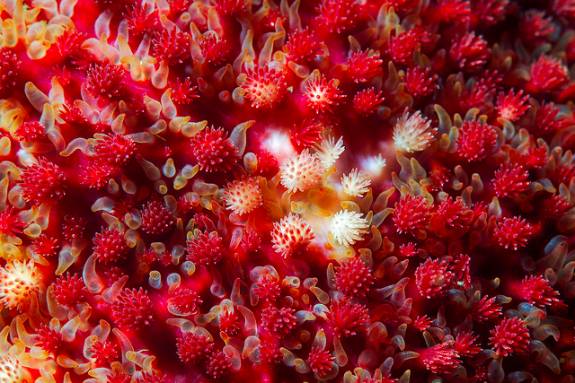
A close-up photo of the common sunstar (Crossaster papposus), a starfish found in the North Atlantic and Pacific oceans. Photo: © Alexander Semenov
Invertebrates close-up never fail to please: with their bright colors and strange structures, they begin to take on patterns that are more art than animal.
So is true of this series of close-up photographs of starfish taken by researcher and photographer Alexander Semenov. But it isn’t enough to call them art: why are all those finger-like appendages waving around? And what are those bulbous spikes (or floral bouquets, if you’re feeling romantic)?
Lucky for us, two floors up from the Ocean Portal office sits Dr. Chris Mah, an expert on echinoderms (a group of ocean animals that includes starfish, sea urchins and brittle stars) at the Smithsonian National Museum of Natural History. He helped us to fill in some of the details.
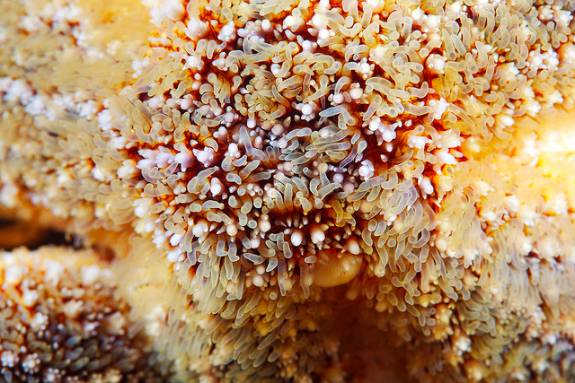
Asterias rubens is the most common starfish found in the north-east Atlantic Ocean. Photo: © Alexander Semenov
The Worm-Like Soft Bits: The vast garden of waving worms isn’t a starfish experiment in cultivation, but how they breathe on the seafloor. Sea stars breathe passively, letting oxygen-rich seawater flow over those finger-like sacs, called papulae, which peek through the cracks in their protective plates. Like fish gills, papulae absorb the oxygen in seawater.
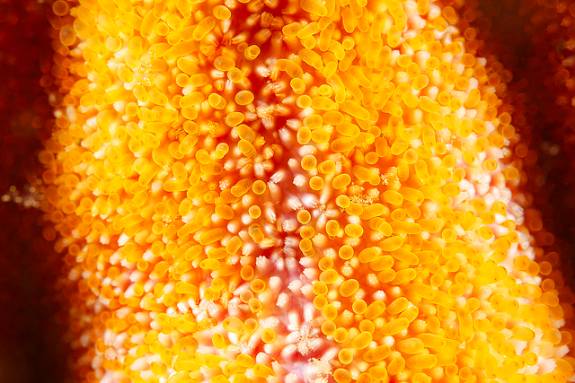
Solaster endeca is a yellow, orange, pink, purple or red seastar shaped like the Smithsonian logo. Here, its translucent yellow papulae filter oxygen from seawater. Photo: © Alexander Semenov
Such fleshy little fingers would make an excellent snack for a passing shrimp or another small predator. To defend themselves, starfish can retract their papulae to make them less obvious targets, as this Mithrodia clavigera, pictured below, has done.
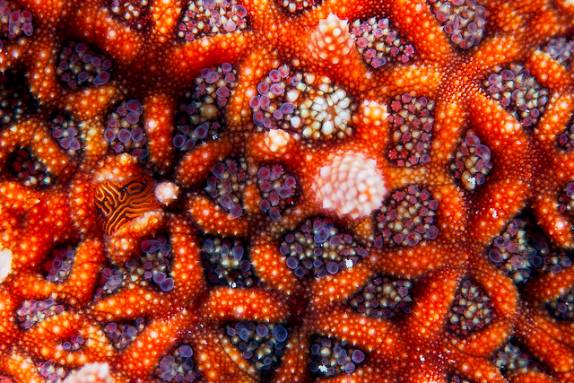
The tropical nail-armed sea star (Mithrodia clavigera) has five long, spiky arms–up close, its papulae have retracted, leaving behind purple cups. Photo: © Alexander Semenov
The Bald, Grooved Patches: Starfish are powered by plumbing: a series of pipes carry food and oxygen through their bodies. Water pressure builds up in these pipes, which helps to support their bodies. It was long-thought that this water pressure also created suction, allowing starfish’s hundreds of tiny tube feet to attach to surfaces and slowly creep across the seafloor. But recent research has suggested that tube feet are more like sticky pads than suction cups.
How does water get in and out of this plumbing system? It goes through the sieve plate (also called a madreporite), a small bald patch on the starfish that, close up, looks like a tiny, grooved maze. While it’s not the only way that water can enter the plumbing, it’s a major intake valve for starfish.
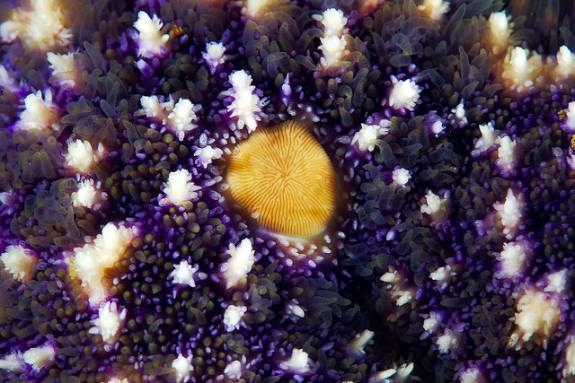
Check out the madreporite on that Asterias amurensis! This starfish, native to Northern Japanese waters, invaded the colder waters of Australia in the 1990s and completely carpets the seafloor in some places. Photo: © Alexander Semenov
Most starfish only have one sieve plate, but larger ones with many arms can have far more. For example, the coral-devouring crown of thorns starfish can have up to 15 to power its many arms. And starfish that reproduce asexually by splitting their bodies in half sometimes end up with more than one.
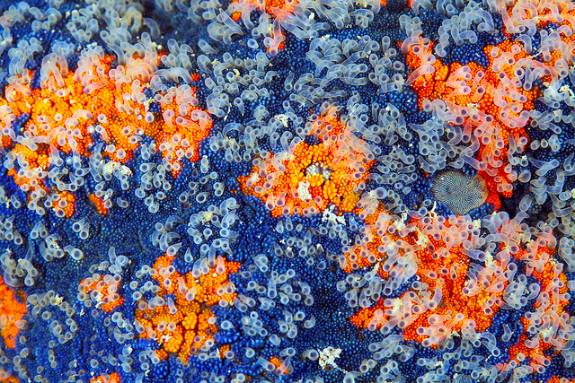
Patiria pectinifera only has one sieve plate–the blue bald patch in the center right. Incidentally, in the center orange patch you can also spot the starfish’s white anus. Photo: © Alexander Semenov
The Spiked Clubs: Humans aren’t the only species that came up with the mace as weaponry. Instead of being offensive tools, starfish spines (as they’re known) protect them from the smothering force of mud and debris. It’s likely that they also protect against predators, but a starfish’s first line of defense is stinky and poisonous chemicals.
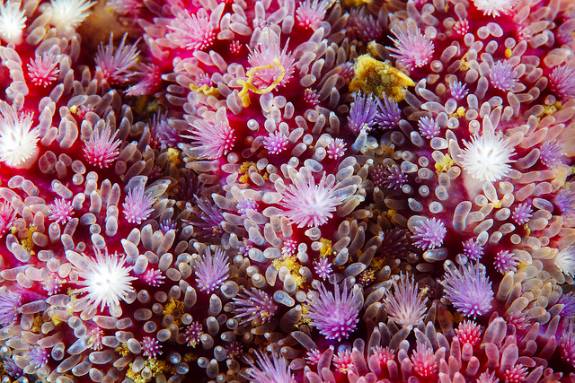
Crossaster papposus is speedy for a starfish–it can move more than 5 meters in 12 hours. Here, wafting papulae are interspersed by spiky spines. Photo: © Alexander Semenov
Not all starfish spines are spiky. These purple spines of Evasterias retifera (below) in a field of orange papulae are low and stubby with lovely white notches. Other species have more architectural spines shaped like pyramids or tall spires.
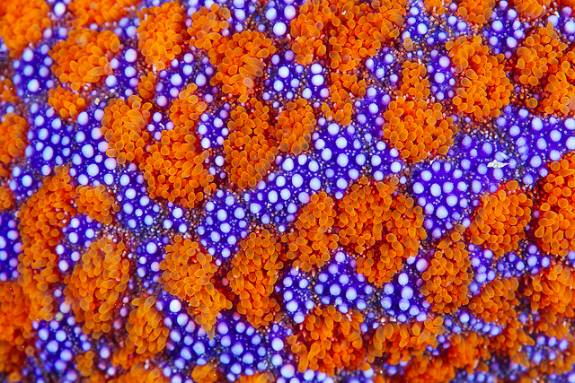
Evasterias retifera, found in cold, northern waters, has blunt purple spines among orange clusters of papulae. Photo: © Alexander Semenov
The Tiny, Bitey Mouths: A slow-moving lifestyle puts starfish in danger of becoming overgrown with algae or other encrusting organisms. As a defense, many starfish are speckled with small, extendable “claws” called pedicellariae, which you can see in the photo below. In some species, the pedicellariae surround the spines and, if the starfish is threatened, will extend out to the spine’s full height! In other species, they are flat and spread out over the starfish’s skin. “They can look like a pair of lips or small jaws,” said Mah. “They probably look like monsters if you’re small enough to appreciate them.”
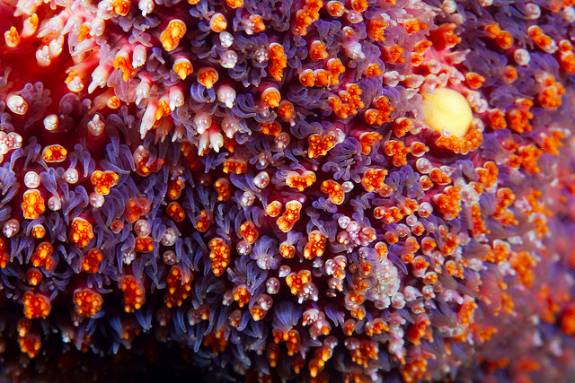
The tiny white bumps surrounding the larger white bumps (spines) on this Aphelasterias japonica are its pedicellariae. Photo: © Alexander Semenov
 Learn more about ocean invertebrates from the Smithsonian’s Ocean Portal.
Learn more about ocean invertebrates from the Smithsonian’s Ocean Portal.